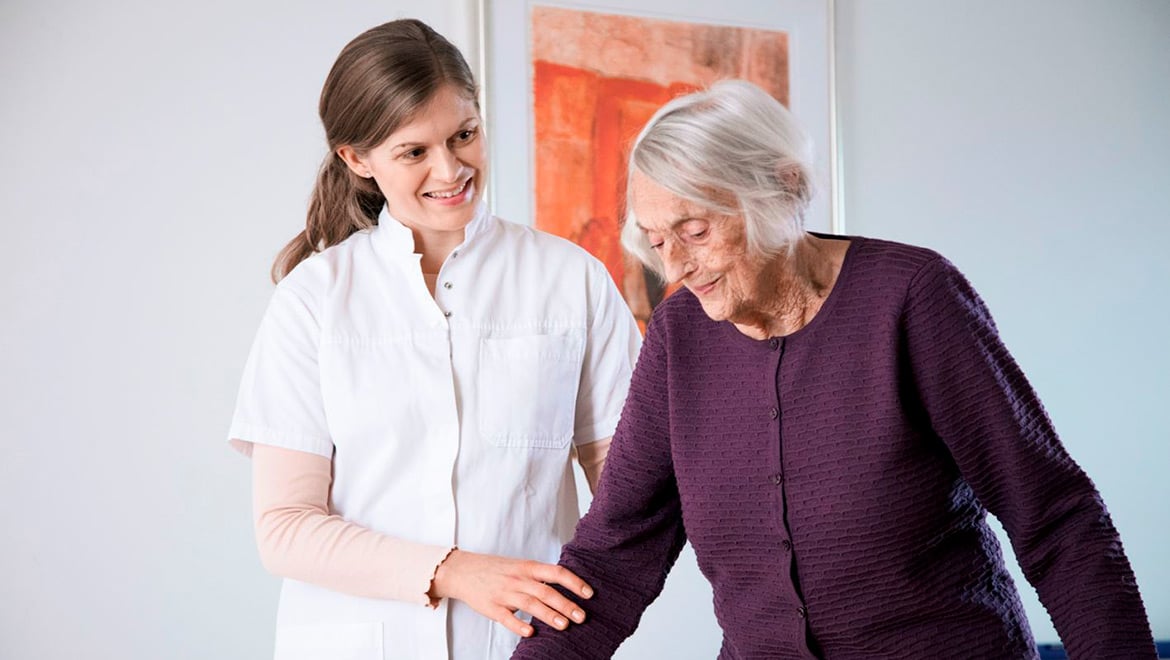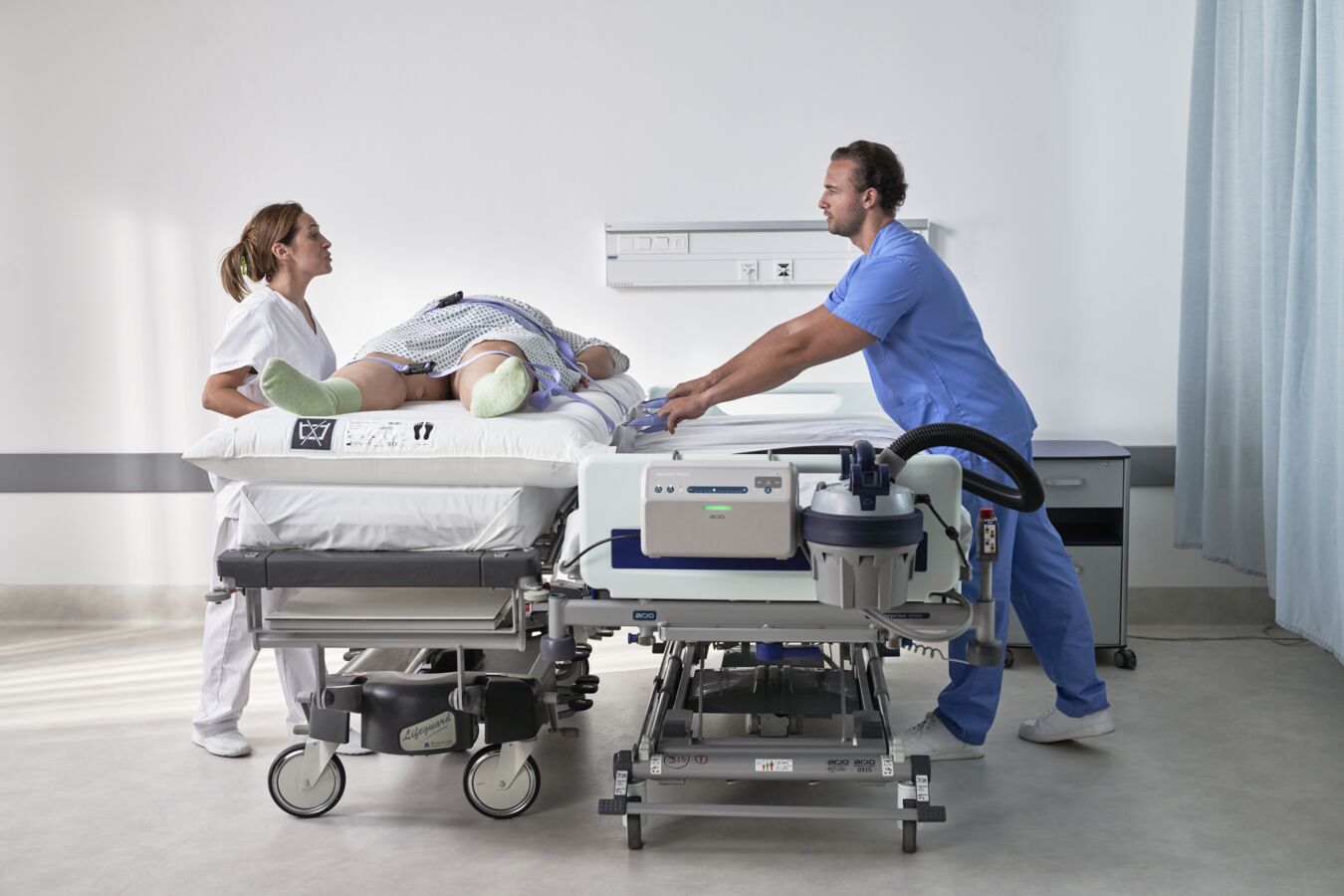What’s the cost of caregiver injury and patient immobility in healthcare environments?
Patient handling injuries can be costly not only for the caregiver but also for the organisation. The financial impact is associated with injury investigation and potential claim management, temporarily replacing an injured caregiver and litigation/settlement costs. This article aims to evaluate the cost of caregiver injury and patient immobility in healthcare environments and identify potential solutions to mitigate these costs. Patient immobility can have a serious financial impact on the organisation and caregiver injury can result in fewer staff resources and reduced working efficiencies.
“The use of the right mechanical assistive aids improves caregiver safety and reduces injury related costs for the organisation”¹
Caregiver injury
Caregiver injury in healthcare environments is a significant concern, with manual handling being a leading cause of musculoskeletal disorders (MSDs) among healthcare workers ². The cost of caregiver injury includes direct costs, such as medical expenses, lost time from work, and compensation payments, as well as indirect costs, such as decreased productivity and increased healthcare utilization.³
In the UK, the average cost of a musculoskeletal injury among healthcare workers was £2,200, with a total cost to the UK healthcare sector of £119 million per year. ² These costs are expected to increase as the population ages and the demand for healthcare services increases³.
Patient immobility
Patient immobility is another significant issue in healthcare environments, as it can lead to a range of complications, including pressure injuries and increased risk of infection. Patient immobility also contributes to increased length of hospital stays and decreased quality of life.⁴
Many patients in hospital will spend the majority of their time in bed, leading to the risk of developing immobility related conditions. This can increase the length of stay and leave patients more physically vulnerable when they are discharged home, every so often resulting in hospital readmission. In the US, Patient handling claims have the highest average total cost of all workers compensation causes of loss at $14,100 per claim.⁵
Immobility associated costs
- Falls - serious fall-related injury to inpatients cost $13,806 per injury ⁶
- Pressure injuries - can cost the organisation $14,506 per pressure injury ⁷
- Venous thromboembolism, each is estimated to cost $17,367 ⁷
Potential solutions to mitigate these costs
There are several potential solutions to mitigate the cost of caregiver injury and patient immobility in care environments, including:
- Assessing functional mobility: Assessing the functional mobility of each individual is key to understanding how they can contribute to their mobility, as well as the potential risk to the caregiver when providing assistance without the suitable equipment.
- Care skills and training: Providing regular training and education to healthcare workers to promote patient handling practices.⁴
- Rehabilitation and early mobilisation: Encouraging early intervention and rehabilitation for patients to improve mobility and reduce the risk of complications.⁴
- Ergonomic techniques and technology: Implementing ergonomic techniques and the use of appropriate assistive devices such as lifts and transfer devices, to reduce the physical strain on caregivers and improve patient mobility.²,⁴
Caregiver injury and patient immobility in healthcare environments are significant concerns, with significant costs to both the healthcare sector, caregivers and individual patients. Assessing individual needs, care skills training, encouraging early mobilisation, and implementing ergonomic working techniques and suitable assistive equipment can help to mitigate these costs and improve patient outcomes.
Download the Patient Handling Clinical Evidence Summary
Supporting you to create safe and efficient environments for work and care
Based on validated external evidence and the latest guidelines, ARJO INSIGHT ASSESSMENTS provide you with an objective overview of the needs of your patients and residents, as well as guidance on the type and number of equipment required to promote mobility, reduce the risk of caregiver injury, and facilitate efficient workflows.
Book a demonstration of our Patient Handling Solutions
Discover the benefits of our Patient Handling Solutions with a personalized demonstration from an Arjo representative. Click here to book a demonstration.
References
1. Totzkay, DL. Multifactorial Strategies for Sustaining Safe Patient Handling and Mobility. Crit Care Nurs Q, 2018. 41(3): p. 340-3442.
2. Health and Safety Executive (HSE). (2019). Manual handling in healthcare. https://www.hse.gov.uk/msd/manual-handling/healthcare.htm
3. Wilkinson, C., Ferreira, M. L., & Latimer, J. (2010). Cost of musculoskeletal injuries in the healthcare sector. Journal of Occupational Health and Safety - Australia and New Zealand, 26(3), 199-205.
4. National Institute for Health and Care Excellence (NICE). (2019). Manual handling in health and social care. https://www.nice.org.uk/guidance/ph46/chapter/Introduction
5. AON Risk Solutions (2016). Healthcare Workers Compensation Barometer. https://www.aon.com/attachments/risk-services/Health-Care-WC-Barometer 2016-web.pdf. Accessed March 10th 2020
6. Wong, C. A., Recktenwald, A. J., Jones, M. L., Waterman, B. M., Bollini, M. L., & Dunagan, W. C. (2011). The cost of serious fall-related injuries at three midwestern hospitals. Joint Commission Journal on Quality and Patient Safety, 37(2), 81-87
7. Agency for Research Healthcare and Quality 2015. Estimating the Additional Hospital Inpatient Cost and Mortality Associated With Selected Hospital-Acquired Conditions









